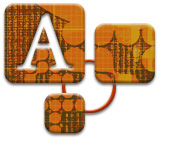|
 Topic
A3.4: Instructional Design Topic
A3.4: Instructional Design
How Course Outcomes Relate
to the “Perceived Value of Courses”
How do you place a value on learning? Business
clients ask how training affects profits, or reduces costs. In many
colleges and universities, learning outcomes have become part of course
and faculty evaluations.
Educational value is often seen
as a measurable change in performing a skill, a change in attitude,
or an increase in knowledge and thinking ability. But, how can we measure
this change? For example, if our objective was to teach how to apply
a splint to a broken arm, and a student can demonstrate this, then
the stated objective was met. We still need to consider the criteria
for measurement, however. How many times without error should the skill
be demonstrated? Should it be textbook perfect or is there room for
error? When an outside agency tests the student on this skill, what
are the expectations of acceptable performance?
Carefully crafting objectives
is more involved than it looks on the surface, but not that complicated.
The key is for the objective to be linked to the testing of assessment.
| Learning
Activity I |
|
Think about a topic that you’re already presenting in a
face-to-face format or other setting you’re comfortable
with. Go to the Expected
Outcomes forum and write and post one or two expected outcomes
for your students. Don’t be concerned about crafting a goal
or an objective for this exercise. Simply focus on the course
outcomes. Save your response for use in later reflections.
|
Development: In this
phase of the ADDIE model, you will prepare your course content materials
and support materials, including any media you intend to use. Begin to
field or beta test the content during this phase as well.
Implementation: In
this next phase, you will put materials “online,” making
them available to a pilot group of learners -- instructors, facilitators,
and program stakeholders -- so these materials can be evaluated. It
is at this phase that you will systematically revise the course, reworking
any element needing improvement.
 
TOP
|